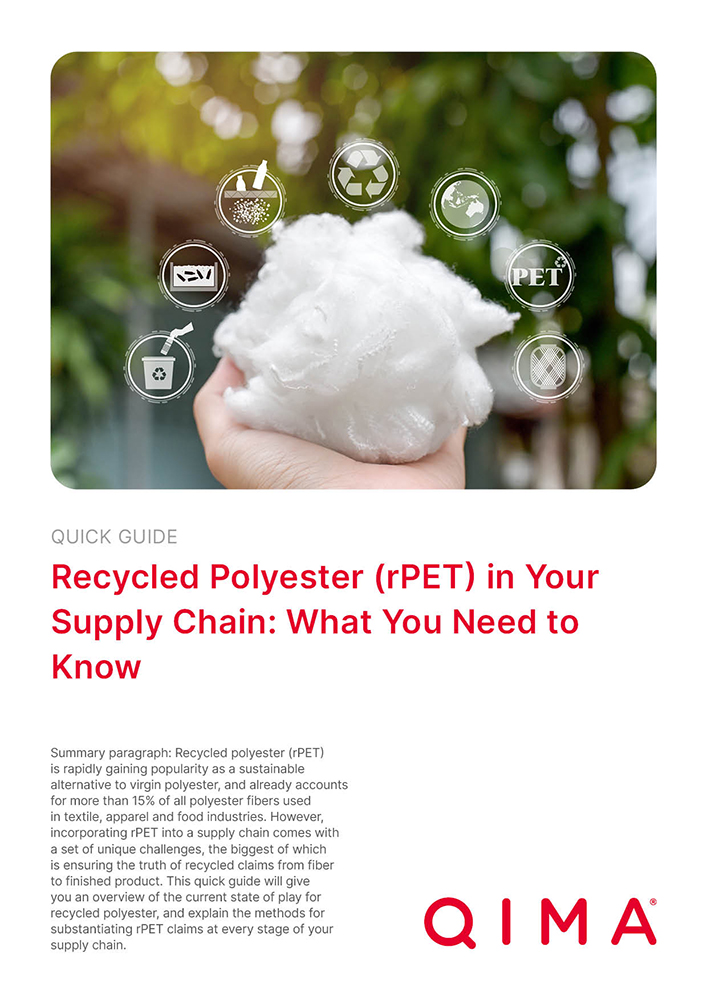Complimentary Quick Guide
Recycled Polyester (rPET) in Your Supply Chain: What You Need to Know
Polyester has been a staple in the textile industry since the 1970s. However, the negative environmental impact of polyester fabric has raised concerns among consumers. As a result, recycled polyester fabrics are gaining popularity as a more sustainable alternative.
While many brands and suppliers are making efforts to incorporate recycled polyester fabrics into their products, it remains challenging to verify the authenticity and quantity of recycled polyester in these items. This presents a dilemma for consumers who want to make informed choices.
This quick guide will give insight on :
- The problem with polyester
- The basics of recycled polyester
- Substantiating rPET claims: challenges, solutions, and testing methods
Genom att ladda ned detta innehåll från QIMA samtycker du till vår sekretesspolicy och villkoren
Recycled Polyester (rPET) in Your Supply Chain: What You Need to Know
Recycled polyester (rPET) is rapidly gaining popularity as a sustainable alternative to virgin polyester, and already accounts for more than 15% of all polyester fibers used in textile, apparel and food industries. However, incorporating rPET into a supply chain comes with a set of unique challenges, the biggest of which is ensuring the truth of recycled claims from fiber to finished product. This quick guide will give you an overview of the current state of play for recycled polyester, and explain the methods for substantiating rPET claims at every stage of your supply chain.
Download this complimentary Quick Guide to learn more about rPET and how to stay compliant.


